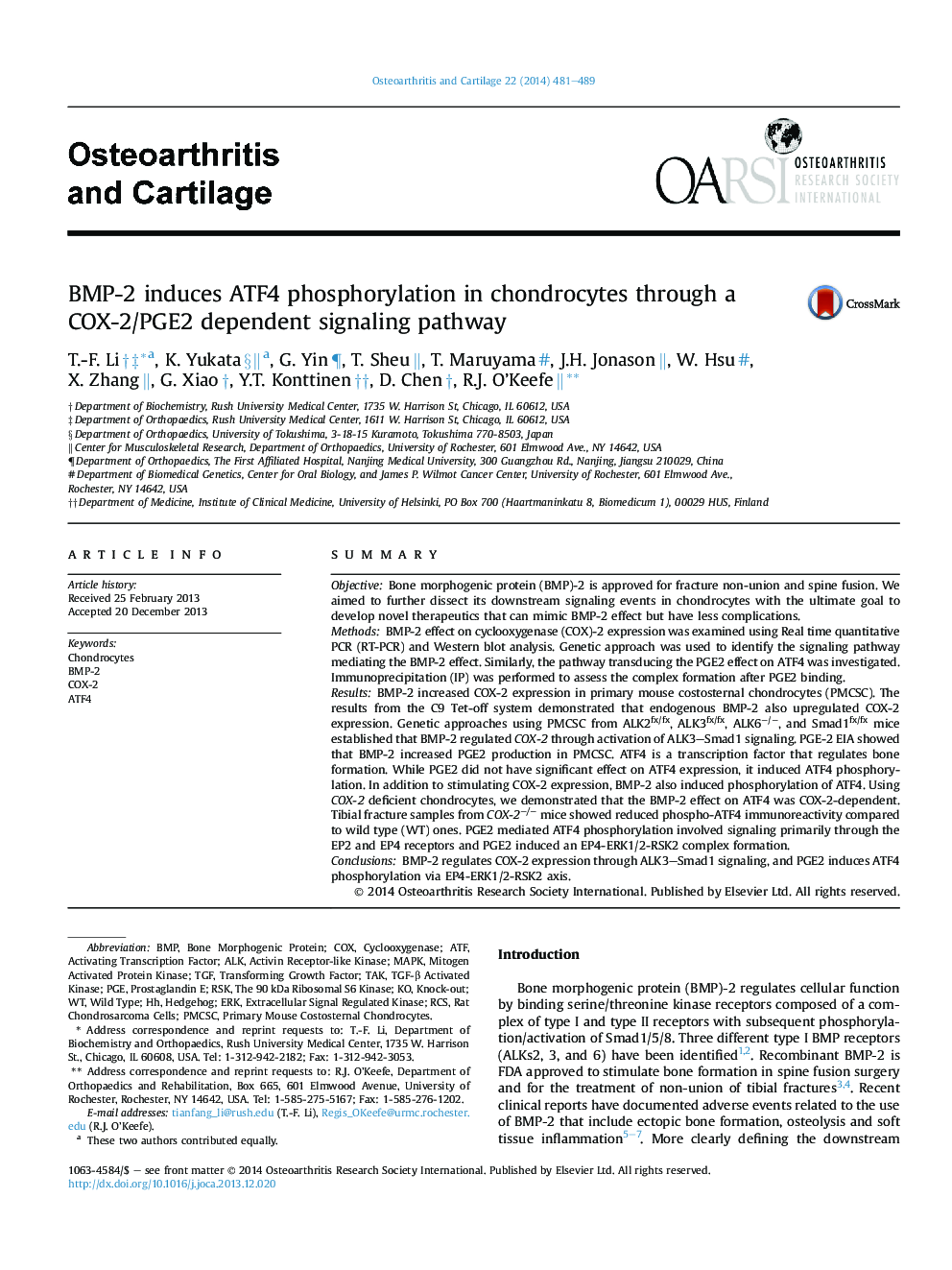| Article ID | Journal | Published Year | Pages | File Type |
|---|---|---|---|---|
| 3379346 | Osteoarthritis and Cartilage | 2014 | 9 Pages |
SummaryObjectiveBone morphogenic protein (BMP)-2 is approved for fracture non-union and spine fusion. We aimed to further dissect its downstream signaling events in chondrocytes with the ultimate goal to develop novel therapeutics that can mimic BMP-2 effect but have less complications.MethodsBMP-2 effect on cyclooxygenase (COX)-2 expression was examined using Real time quantitative PCR (RT-PCR) and Western blot analysis. Genetic approach was used to identify the signaling pathway mediating the BMP-2 effect. Similarly, the pathway transducing the PGE2 effect on ATF4 was investigated. Immunoprecipitation (IP) was performed to assess the complex formation after PGE2 binding.ResultsBMP-2 increased COX-2 expression in primary mouse costosternal chondrocytes (PMCSC). The results from the C9 Tet-off system demonstrated that endogenous BMP-2 also upregulated COX-2 expression. Genetic approaches using PMCSC from ALK2fx/fx, ALK3fx/fx, ALK6−/−, and Smad1fx/fx mice established that BMP-2 regulated COX-2 through activation of ALK3–Smad1 signaling. PGE-2 EIA showed that BMP-2 increased PGE2 production in PMCSC. ATF4 is a transcription factor that regulates bone formation. While PGE2 did not have significant effect on ATF4 expression, it induced ATF4 phosphorylation. In addition to stimulating COX-2 expression, BMP-2 also induced phosphorylation of ATF4. Using COX-2 deficient chondrocytes, we demonstrated that the BMP-2 effect on ATF4 was COX-2-dependent. Tibial fracture samples from COX-2−/− mice showed reduced phospho-ATF4 immunoreactivity compared to wild type (WT) ones. PGE2 mediated ATF4 phosphorylation involved signaling primarily through the EP2 and EP4 receptors and PGE2 induced an EP4-ERK1/2-RSK2 complex formation.ConclusionsBMP-2 regulates COX-2 expression through ALK3–Smad1 signaling, and PGE2 induces ATF4 phosphorylation via EP4-ERK1/2-RSK2 axis.
